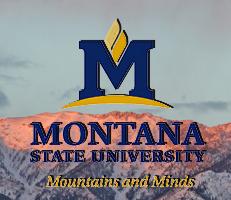
CS 440
Computer Networks
Fall Semester, 2005
|
|
Syllabus
Catalog Description4 credits, 3 lecture, 1 laboratorySemester taught: Fall Prerequisite: CS 223 or CS 302 How computer systems are organized into networks and how communication over networks is organized. Communication protocols and their design with an emphasis on current technology and implementation of software.
Course Objectives
The objectives of this course are:
The assessment of how well these objectives were met will be based on:
Course Outline:
Fall 2005 DetailsRoom & Time:
Section 04, Tue., 10:00 - 11:50 AM, EPS 254
Course Organization: Computer networks is a huge body of material - far more than can reasonably
be covered in one semester. Rather than attempting to discuss every section
of the book, the course will be organized into larger bodies of material,
possibly covering parts of several chapters and outside materials. The
lectures will concentrate on conceptual issues, and may jump around the
textbook occasionally. If you want a particular topic discussed, feel free
to suggest it either in class or by email.
Textbook:
PoliciesQuizzes are a significant part of the grade for the class. They will be given every other Wednesday, to avoid conflicts with interview trips. You will not be allowed to make up missed quizzes, but the lowest quiz grade for the semester will be dropped.Assignments will be due at the start of class on the due date. Late assignments will not be accepted unless you have an excused absence.
Active Learning:
A certain amount of active learning will be included in the class. This could come in a variety of forms, but will generally mean that the lecture time will be partially consumed with individual or group assignments regarding topics of interest. The paper also plays a role in this process. Part of the active learning scenario will be that assignments that are completed and submitted for grading, and quizzes will be a signficant part of the final grade. Class attendance and participation will be important.
Laboratories and Programming Assignments:
Everyone is expected to work on the programming assignments independently and no credit will be given for team efforts. That also means that glaring similarities between two programs will be treated as a violation of the University Conduct Policy. In an effort to insure sufficient Linix/Unix and C experience for graduating
seniors, all assignments must be done using the C (or C++) programming language
and using the Linux operating system. The exception will be the final programming
project, which can be done in any language you choose.
The laboratory represents 10% of the credit for the course. In the labs you will be exposed to a variety of network properties that are of interest to computer scientists, including writing network programs, simulating different network topologies, examining the data being transmitted over a network, and configuring networking equipment. Part of the lab time will also be reserved for resolving questions about programming assignments. There will be a final exam over the laboratory material during the last laboratory period of the semester. More information can be found on the Laboratory Page.
Final Exam:
Grading:
Grades will be posted electronically on a weekly basis (more or less) using your student id number as the key. If you don't want your grades posted, notify me. If you want me to use some other key, send it to me electronically. |

|

|
| © Copyright Montana State University-Bozeman | Last updated 2005-11-09 by bwall@cs.montana.edu. |